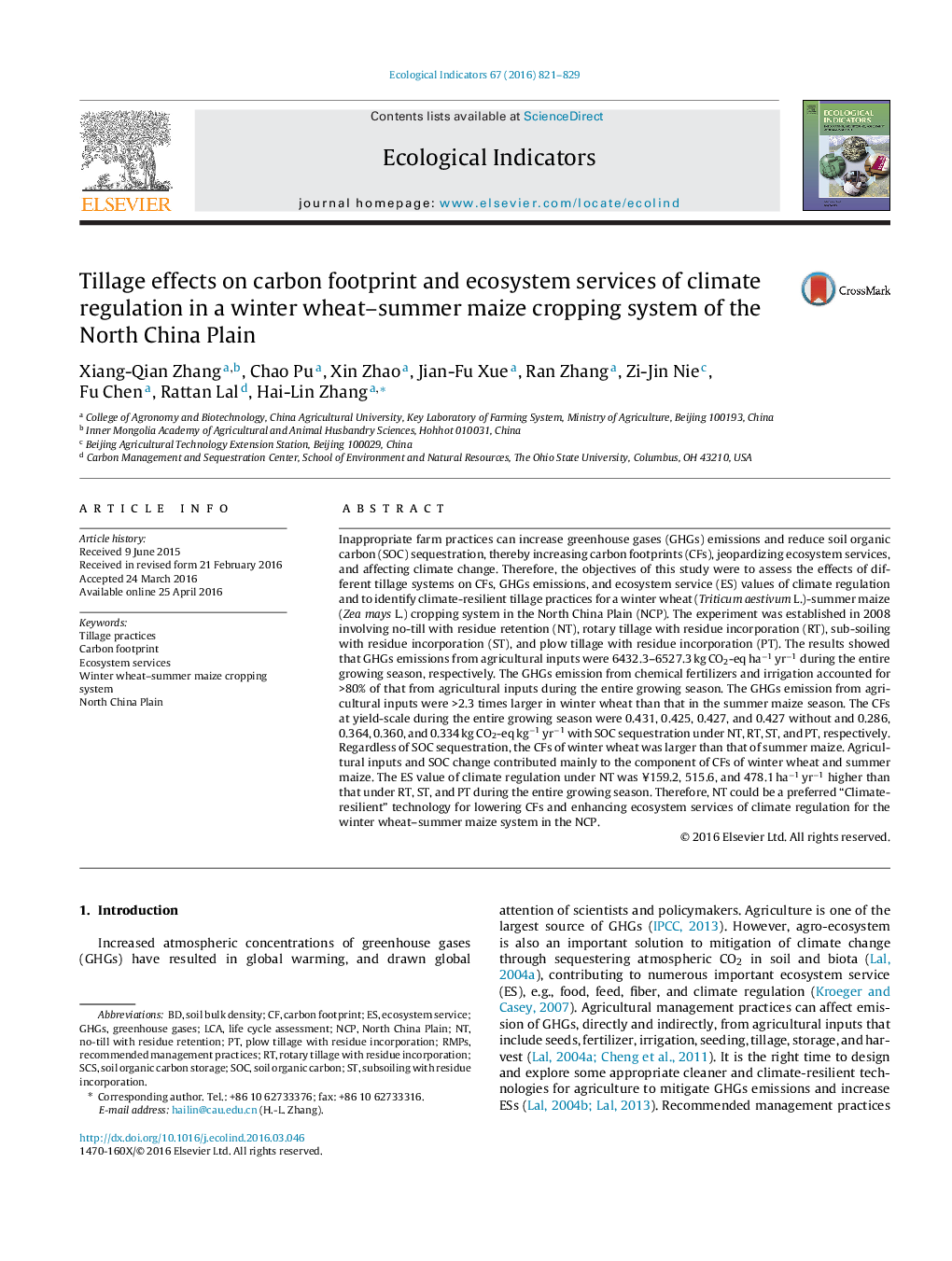| کد مقاله | کد نشریه | سال انتشار | مقاله انگلیسی | نسخه تمام متن |
|---|---|---|---|---|
| 4372927 | 1617135 | 2016 | 9 صفحه PDF | دانلود رایگان |
• The carbon footprint for wheat season was higher than that for maize season.
• No-till reduced CF of the entire growing season (including SOC change).
• No-till practice increased ecosystem service values of climate regulation.
• Fertilizer use was responsible for a large proportion of greenhouse gas emissions.
Inappropriate farm practices can increase greenhouse gases (GHGs) emissions and reduce soil organic carbon (SOC) sequestration, thereby increasing carbon footprints (CFs), jeopardizing ecosystem services, and affecting climate change. Therefore, the objectives of this study were to assess the effects of different tillage systems on CFs, GHGs emissions, and ecosystem service (ES) values of climate regulation and to identify climate-resilient tillage practices for a winter wheat (Triticum aestivum L.)-summer maize (Zea mays L.) cropping system in the North China Plain (NCP). The experiment was established in 2008 involving no-till with residue retention (NT), rotary tillage with residue incorporation (RT), sub-soiling with residue incorporation (ST), and plow tillage with residue incorporation (PT). The results showed that GHGs emissions from agricultural inputs were 6432.3–6527.3 kg CO2-eq ha−1 yr−1 during the entire growing season, respectively. The GHGs emission from chemical fertilizers and irrigation accounted for >80% of that from agricultural inputs during the entire growing season. The GHGs emission from agricultural inputs were >2.3 times larger in winter wheat than that in the summer maize season. The CFs at yield-scale during the entire growing season were 0.431, 0.425, 0.427, and 0.427 without and 0.286, 0.364, 0.360, and 0.334 kg CO2-eq kg−1 yr−1 with SOC sequestration under NT, RT, ST, and PT, respectively. Regardless of SOC sequestration, the CFs of winter wheat was larger than that of summer maize. Agricultural inputs and SOC change contributed mainly to the component of CFs of winter wheat and summer maize. The ES value of climate regulation under NT was ¥159.2, 515.6, and 478.1 ha−1 yr−1 higher than that under RT, ST, and PT during the entire growing season. Therefore, NT could be a preferred “Climate-resilient” technology for lowering CFs and enhancing ecosystem services of climate regulation for the winter wheat–summer maize system in the NCP.
Journal: Ecological Indicators - Volume 67, August 2016, Pages 821–829
